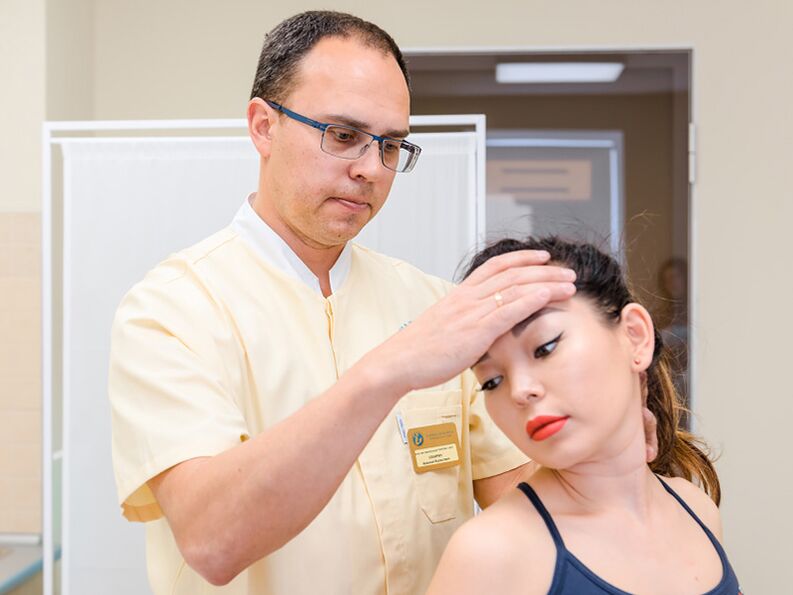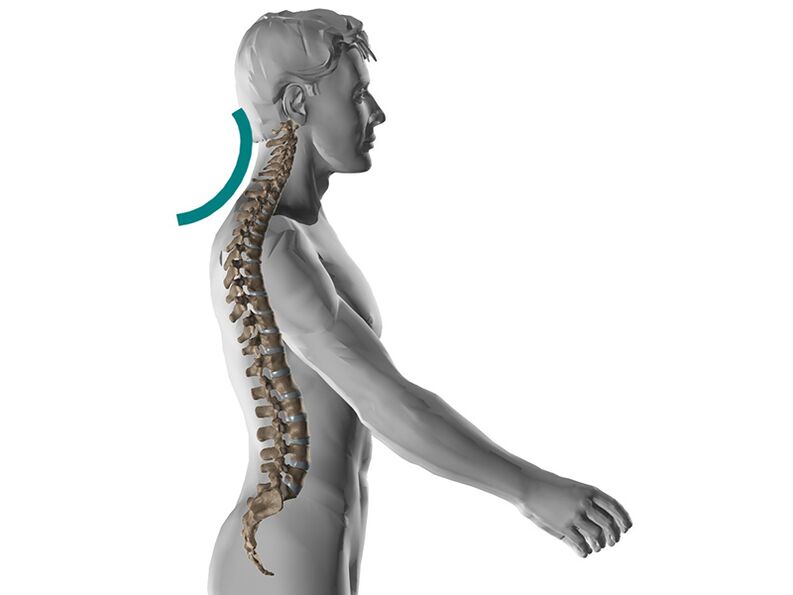Cervical osteochondrosis is a common degenerative-dystrophic disease that develops in the cervical spine. In women, a weak muscular corset, as well as thin bone tissue, leads to a faster development of pathology. Symptoms of cervical osteochondrosis are pronounced in women. When they appear, treatment should begin immediately.
Causes of cervical osteochondrosis in women
Osteochondrosis of the cervix in women can develop in the presence of various provoking factors. The development of pathology is diagnosed regardless of the age of the patient. The causes of osteochondrosis in women are:
- Insufficient physical activity;
- Sedentary work;
- Sedentary lifestyle.

The emergence of pathology in the cervix is diagnosed with frequent hormonal insufficiency. If the load on the spine increases during the birth of a child, then it leads to the emergence of this disease. Improper nutrition leads to metabolic disorders throughout life. All this leads to the development of the disease.
Older women are at risk for developing the disease. A fairly common cause of osteochondrosis is hypothermia. The disease can develop with injuries. With injuries, the emergence of disc diseases in women has been diagnosed. Pathology often develops against the background of infectious processes.
Osteochondrosis of the fair sex develops under the influence of various factors. This is why you need to take responsibility for your health.
Signs of osteochondrosis in women
Signs of osteochondrosis in women appear some time after the onset of the degenerative process. It is quite common for vertebrates to move out of their boundaries, which aggravates the situation as they thin out in parallel. Pain in the background of inflammatory processes in the intervertebral discs is diagnosed, which can be permanent or temporary.
During the course of the disease, brain tissue is damaged, causing headaches. Dizziness may be detected during compression of the vertebral artery during cervical osteochondrosis. Often women of the weaker sex experience a change in blood pressure. Women may experience heart palpitations during the development of cervical osteochondrosis.
In some cases, with pathology, patients experience hearing impairment. Symptoms of osteochondrosis in women manifest as a change in gait. The pathological process causes frequent variability of mood. Most patients are diagnosed with severe fatigue while performing daily tasks. Symptoms may be manifested by impaired vision. When the disease significantly worsens the condition of the teeth, leading to the development of various dental diseases. Some people have been diagnosed with spasms of the back and neck muscles. With this pathology the sound intensity can be reduced.
The disease adversely affects the condition of the brain, leading to deterioration of memory and thinking processes. Some patients experience snoring during sleep. This is due to the tension in the neck muscles during sleep. The most common of the symptoms is radicular syndrome. Its appearance is diagnosed by compression of the cervical spine nerves.

Since the disease affects the nervous system, it causes numbness of the fingers, making it impossible to perform the most important tasks related to fine motor skills. Symptoms are manifested in the form of weakness of the hands. If osteochondrosis of the chest or lumbar region is diagnosed, then it causes back pain. If the cervical region is damaged, the head or neck will ache. The pain can spread to both the back and the limbs. Sleep disorders are often diagnosed.
Signs of osteochondrosis are more pronounced in women after 50 years.
Treatment of cervical osteochondrosis in women
Immediate treatment of cervical osteochondrosis in women is essential if symptoms occur. First of all, joint pain is eliminated. Appropriate examinations are necessary before treating osteochondrosis in women. This will allow you to schedule a rational treatment.
Basic treatment begins only after a thorough examination of the patient. The most common methods of joint treatment include drug therapy. In this case it is recommended to use topical preparations.
When the disease appears, basic treatment begins only after consultation with a physician. If topical preparations are not effective enough, then the use of drug tablet forms is recommended. In most cases, after such treatment, the pain disappears completely. If severe muscle pain is observed, then the use of anesthetic injections is recommended.
By relieving pain, basic treatment helps in most cases. But, to increase its effectiveness, you can use folk methods. The use of joints is recommended to eliminate shoulder joint and neck pain. Peculiarities of treatment of cervical osteochondrosis require the use of massage, drug treatment, folk methods. Physical therapy is also effective. Yoga and other therapeutic methods are prescribed for the ineffectiveness of gymnastics. It is also recommended to treat the disease with a method such as water aerobics.
Preventive measures
Timely prevention is recommended to prevent the development of pathology. It involves following a few simple rules. Regular exercise is recommended, which helps to develop the upper shoulder girdle, as well as strengthen the back. Adequate physical activity will help a woman avoid the disease. Regular outdoor walks are recommended.
Swimming is an effective preventative method. If a woman has a sedentary job, then she gets up regularly and is advised to exercise. Every woman should have a rational and proper diet. It is recommended to eat foods rich in vitamins and minerals. When the first signs of an abnormal process appear, you need the help of a doctor. Timely identification of the pathological process is the key to successful treatment of the pathology.
Osteochondrosis is characterized by severe degenerative changes in the cartilage and joints. Pathology in women is accompanied by pronounced signs. At the first signs, the patient should consult a doctor, who will prescribe rational treatment after the appropriate diagnosis.
































